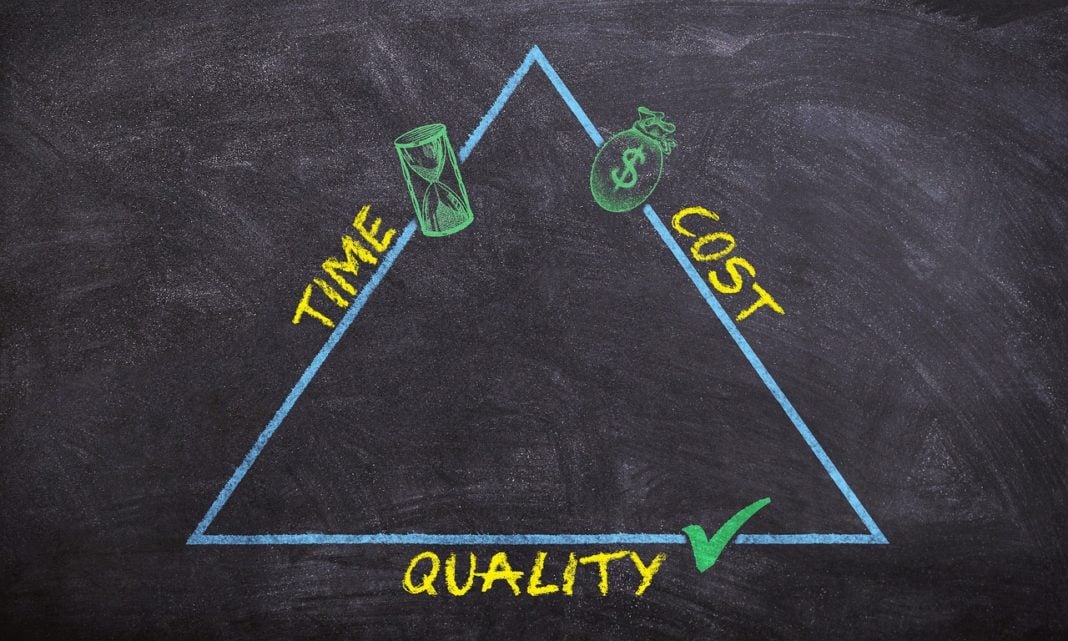Whether it was the Columbia shuttle disaster of 2003 or Toyota recalling its 1.7 million defective vehicles; both occurred due to the poor choice of materials.
The infamous ocean liner Titanic, that sank and took the lives of 1503 people also faced similar defects in the quality of the materials used. Upon collision with the iceberg, the rivets failed, causing water to rush in and sink it. Later analysis by researchers revealed the poor quality of materials was to be blamed.
Today, no matter which product or service you go for, quality is given high-preference. It is because one bad experience could dangerously cause a backlash against the entire company that manufactures it.
Quality means doing it right when no one is looking -Henry Ford
Excellent quality is the key to earn customer loyalty and also for building your brand gradually. The quality aspect of any product or service is entirely handled by the operations department of a company. They are responsible for everything, starting from resource allocation to after-sale services.
Today we have many methods of verifying the quality of products and materials. The most popular and widely used tool for making sure the quality is up to the industry standard or even better than that is Six-Sigma.
Six Sigma

Six Sigma mandates that there should only be 3.4 defects in a container of 1 million products or resource materials. In other words 99.99966% of the products must remain without defects. The effectiveness of this methodology has produced tremendous results in other companies. Six sigma uses a plethora of statistical and empirical methods and also builds an environment of people who are dedicated to implementing the process.
An extension of Six Sigma has also become very popular and it’s called Lean Six Sigma. Like its parent methodology, Lean Six Sigma combines elements from both Lean and Six Sigma, consequently helping in reducing both defects and waste.
Six Sigma existed since the 1920s and but the name was officially coined by Bill Smith who served as the chief engineer in Motorola in the 80s. Later, the chairman of the same company made this process as the main tool to measure productivity and it has helped the company save up to $16 billion up to now.
Features of Six Sigma

Some key features of Six Sigma are:
- Six Sigma has two main types; DMAIC and DMADV. DMAIC stands for Define, Measure, Analyze, Improve and Control is used for existing systems. DMADV stands for Define, Measure, Analyze, Design, Verify and is used for the starting of new processes.
- It aims to achieve leadership support and commitments. The data is provided by the top management to the Six sigma teams who are responsible to handle its implementation. Here, the coordination along with adequate information is needed by the teams.
- Six Sigma is implemented based on sound and accurate data. The data given for implementation attempts to reduce the dependency on human experiences and lower the chances of errors.
- Another main feature of Six Sigma is its focus on changing the ways employees function and train them in ways that would help them become more effective and efficient in achieving their goal. Also, Six Sigma mandates that the employees would know about the changes that will come after the implementation.
Lean Six Sigma continues to be a need for manufacturing industries mainly and its certifications are highly recommended for any senior-level positions. These certifications usually come in the forms of Yellow, Green, Black and Master Belts, which are akin to various levels in the Lean Six Sigma certification hierarchy. Yellow belt deals with the fundamentals of the topic, while Green Belt is more intermediate level. The Black and master Belts are of advanced levels of learning lean six sigma.
TQM

TQM or Total Quality Management is another methodology that enjoyed its global fame until Lean and Six Sigma became more popularly used in companies. TQM focused mainly on making an environment where employees would continuously improve their processes to provide on-demand products and services that customers will find good value.
TQM encompasses the 14 principles of Edward Deming, often referred to as the father of TQM.
- Create constancy of purpose for improving products and services.
- Adopt the new philosophy for economic stability.
- Cease dependence on inspection to achieve quality.
- End the practice of awarding business on price alone; instead, minimize total cost by working with a single supplier.
- Improve constantly and forever every process for planning, production and service.
- Institute training on the job.
- Adopt and institute leadership.
- Drive out fear from the minds of the employees
- Break down barriers between staff areas.
- Eliminate slogans, exhortations, and targets for the workforce.
- Eliminate numerical quotas for the workforce and numerical goals for management.
- Remove barriers that rob people of pride of workmanship and eliminate the annual rating or merit system.
- Institute a vigorous program of education and self-improvement for everyone.
- Put everybody in the company to work accomplishing the transformation.
TQM had its birth during the late 70s and early 80s when Europe had to face off in a competition with Japan who was able to produce excellent goods at lower prices. It was the very first time that the UK became an importer of finished good since the start of the industrial revolution. It was during this time that the US started looking for ways to emulate this practice of Japan. It was around this time TQM came into being through the exact date is unknown. Compared to Six Sigma, it is an older concept.
Features of TQM

Some of the primary characteristics of TQM are:
- TQM is a perpetual process where efforts are given to make room for improvement, while at the same time lowering the costs as well. It is the driving force behind a company’s efficiency as well as keep the company leading the competition.
- Much like how an unwell person will not enjoy the external factors much, TQM knows this fact well. Which is why it takes steps on ensuring that internal customers are happy and that will automatically make the external customers happy as well.
- TQM stresses highly on reducing errors and consequently, defects.
- TQM works through all hierarchies of management and makes everyone a vital stakeholders in the company.
- TQM also enforces positive reinforcements for the stakeholders and employees of the company so that the work would continue to be efficient and processes would continually improve.
Conclusion
TQM and Six Sigma are still widely used, though Six Sigma seems to have overtaken the lead in many companies for its marvelous results. And if you are interested in pursuing a senior position in the operations department for any company, I would strongly recommend Lean Six Sigma certification courses.
If you are a beginner in Six Sigma, you can try out the “Six Sigma Yellow Belt Masterclass” which also includes a YB project. The course comes with 6.5 hours of video that covers 30 sections, giving you a complete understanding of all the essentials of Six Sigma.
If you are familiar with the fundamentals of Six Sigma, you can try out the “Six Sigma Green Belt: Become a Kano Analysis Specialist” online course. It comprises 1 hour of video that covers 8 major topics such as Kano analysis grid, Kano questionnaire, advantages of Kano analysis and much more.
And for more advanced knowledge of the subject, you can try out the “Six Sigma Black Belt: Become a QFD Specialist” which is meant for the most advanced concepts of Lean Six Sigma.



